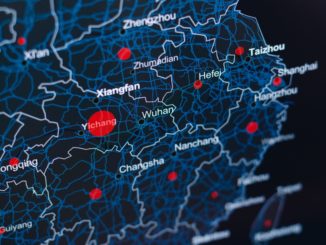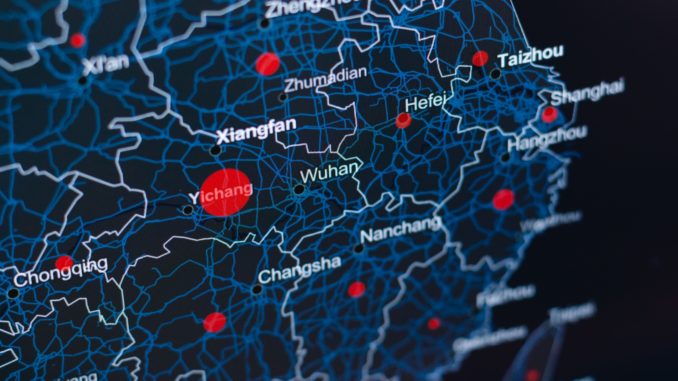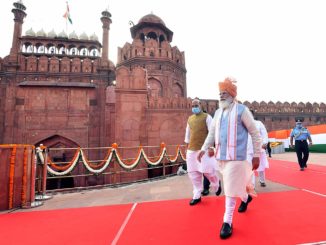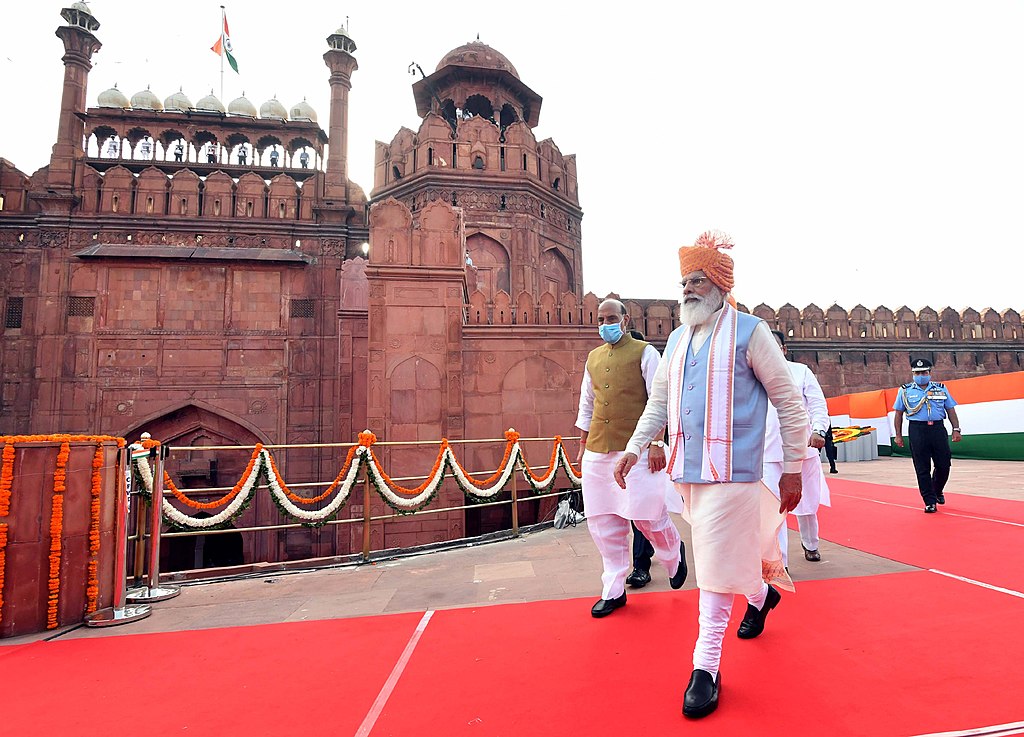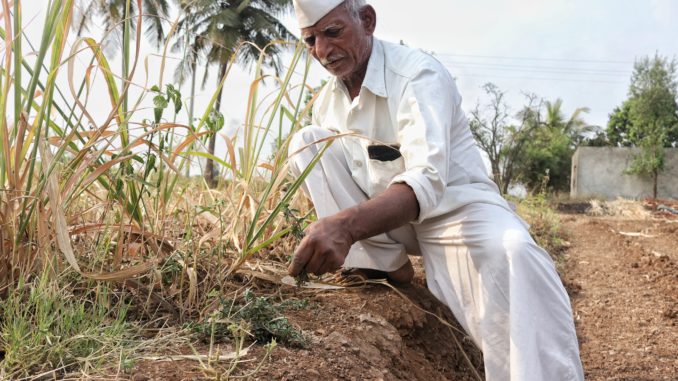
Narayan Gaikwad knew something was wrong.
For eight days in August, he was given intravenous drips of electrolytes and saline solution, twice a day. By the time he realized he was being treated by a quack, it was too late. Fatigue had grappled him, and in no time, he collapsed in his house in the village of Jambhali in the western Indian state of Maharashtra.
His family feared COVID-19 had caused his symptoms. They rushed 73-year-old Gaikwad to a makeshift public COVID center—10 miles from home. “There were at least 500 patients, while the facility had some 100 beds,” recalls his son, Bhagat. Next, they traveled another eight miles to a private hospital. “The doctor wouldn’t admit him because he didn’t have a COVID report,” recalls Bhagat.
“The entire system was saturated because many private doctors refused to treat COVID patients,” he says. Speedily, they rushed him to a local village doctor, who prescribed a few injections. “I did come to my senses, but my cough and cold didn’t go away,” remembers Gaikwad. All he wanted was a COVID test, which was hard to come by because the system was overwhelmed and unprepared. After that, he spent ₹5,000 (Indian rupees or $70 USD) and got a computed tomography (CT) scan. “We then rushed to a medical doctor, who prescribed week-long medicines and injections. It cost me another ₹13,000 ($180).” This was 10 days into his trek for proper healthcare and Gaikwad still couldn’t get a COVID test. “I was breathless.” To get tested, his family took him to a private university that had been converted to a COVID center—12 miles away. As anticipated, he tested positive. “I was put on oxygen, and within three days, I started feeling better,” he says with a sigh of relief.
Meanwhile, the nine members of the Gaikwad family tested positive for stigma. “People started circulating that my entire family tested positive,” says Narayan, a low-income farmer. None of them were allowed to step out of the house for a month. “We had to throw away 2,000 kilograms of harvested tomatoes worth $275,” says Bhagat. Gaikwad never anticipated this would cost them a season’s earnings.
After he tested negative, Bhagat posted a screenshot of this report on his WhatsApp status, with the caption ‘Negative’. “It was necessary. Otherwise, we would have died of hunger, as people wouldn’t let us step outside,” says Gaikwad. In India, as in many parts of the world, ordinary people rely on groups created inside the WhatsApp messaging application on their smartphones to communicate with wide swaths of people, like their neighbors, coworkers and political allies.
It didn’t take long for the second wave to devastate India. On May 14, India reported 414,182 infections in 24 hours—the highest single day spike in the world. India’s far-right prime minister, Narendra Modi, prematurely declared a victory against COVID in January 2021. Leaders of the Bharatiya Janata Party (BJP), of which Modi is a member, started addressing election rallies in four eastern and southern Indian states—drawing several thousand people without masks. At one event, Modi proudly said, “I’ve witnessed such a rally for the first time.”
On the same day, India reported over 234,000 infections. With an oversaturated healthcare system, India ran out of oxygen, hospital beds, ventilators and essential medicines. Soon, people took to social media, making SOS calls for healthcare facilities. Hospitals started petitioning high courts for the lack of oxygen supply as several people died. As of May 30, India reported over 28 million cases with 329,000 people succumbing to the virus. A New York Times analysis reveals a more likely scenario could be 539 million cases with 1.6 million estimated deaths.
But Gaikwad couldn’t find a bed in the first wave.
“For poor people like us, the system collapsed long ago,” he says.
Three Decades of Austerity
In 1991, India “liberalized” its economy, which meant opening it to international markets, leading to a mass-scale privatization of public services and goods. In 1993, the World Bank released its World Development Report, which focused on healthcare. Ravi Duggal, health researcher and activist writes, “This report basically is directed at third-world governments to reorient public health spending for selective health programs for targeted populations wherein it clearly implies that curative care, the bulk of health care, should be left to the private sector.”
The World Bank report said investments in specialized health facilities should be diverted to the private sector by reducing public subsidies. It encouraged “social or private insurance” for clinical services. The result: 85.9 percent of people in rural India have no medical insurance.
To encourage privatization, the government reduced the customs duty on imported medical equipment from 40 percent in the 1980s to 15 percent in the early 2000s. As of 2016, it was down to 7.5 percent. From 1986-87, India spent 1.47 percent of its GDP on healthcare. Now it has been investing a little more than 1 percent of its GDP. Meanwhile, it has 43,487 private hospitals and a mere 25,778 public hospitals. Yet, a 2019 World Health Organization report pointed out average global healthcare spending was 6.6 percent of GDP.
Frontline Health Care Workers Bear the Burden
In March 2020, India’s Health Ministry tasked the Accredited Social Health Activist (ASHA) workers to contain COVID across 600,000 villages. For this, they survey households, find suspected COVID cases, and monitor oxygen levels and body temperature. ASHAs also support COVID patients who are home-bound and act as a liaison to people who are able to get treatment outside the village. This is in addition to over 50 responsibilities that include universal immunization, ensuring proper pre- and post-natal care, spreading awareness about contraception, hygiene, and maintaining health records.
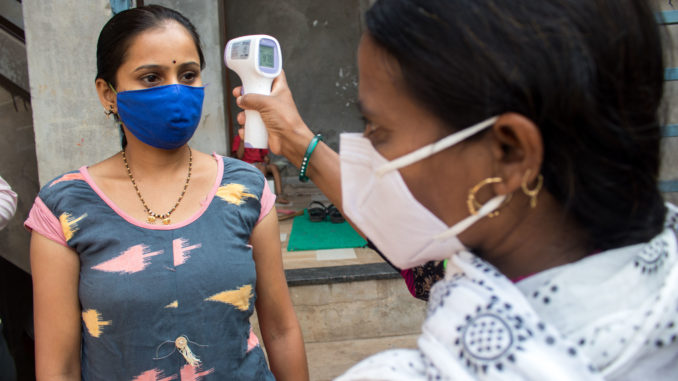
For every 1,000 people, an ASHA worker—normally a woman from within a village—is appointed under India’s National Rural Health Mission. Swati Nandavdekar, 40, from the village of Mendholi in Maharashtra’s Kolhapur district, is one of 970,676 ASHAs. “We are tired,” says Nandavdekar, who has worked without leave for 410 days. “People abuse me verbally and don’t answer my survey questions.”
In avoiding her, people are bypassing the ostracism that follows if they test positive, as in the case of Narayan. “In the previous lockdown, everyone lost their livelihood, and now they can’t afford an isolation of 14 days,” she elaborates. This is in contrast to last year, when ASHAs like Nandavdekar were able to successfully contact-trace COVID patients.
Dr. Sangita Gurav, the only public doctor for 15 villages that Kolhapur’s Bhuye Public Health Centre serves, commented on the rising fatality rate. “People consult us only after a week from testing positive,” she says. “By this time, their symptoms become severe, and oxygen levels start dipping.”
Sandhya Jadhav, an ASHA supervisor from Kolhapur, who oversees the work of 24 ASHAs, says, “Every day I get calls from ASHAs who talk of mental stress and the instances of verbal abuse.” ASHAs receive “performance-based incentive.” In Maharashtra, they average a meager monthly income of ₹3,000-4,000 ($41-55). But it comes down to $25 for ASHA workers like Nandavdekar, who is from a smaller village. “Most of them haven’t received PPE kits, masks, hand sanitizers and gloves for surveying even in the containment zones,” says Jadhav.
On May 24, ASHA workers across India had gone on a 1-day strike demanding legal status of permanent workers, adequate health safety gear, insurance and a hike in their wages. Last year, over 600,000 ASHA workers protested with similar demands.
For 833 million people, India has a mere 155,404 sub-health centers (which are the first point of contact for rural communities of 5,000 people), 5,183 community health centers, 24,918 public health centers and 810 district hospitals. That’s 1 district hospital for every 1 million people. With such a poor infrastructure, it’s the ASHAs who remain in direct contact with the villages. “We have been working since 2009 and have saved countless lives, which even the government knows,” Nandavdekar says. “But they won’t even treat us with respect.”
Last year, the Indian government announced an insurance program of $69,000 (USD) for frontline healthcare workers. “If there was insurance, why weren’t we informed of the company and other details?” Jadhav says. “They took our signature on a blank paper.”
As cases continue to rise, the job of ASHA workers is far from over.
“We are dying daily,” Nandavdekar says. “The only difference is that it’s not called death.”
Sanket Jain is an independent journalist based in the Kolhapur district of the western Indian state of Maharashtra. He was a 2019 People’s Archive of Rural India fellow, for which he documented vanishing art forms in the Indian countryside. He has written for Baffler, Progressive Magazine, Counterpunch, Byline Times, The National, Popula, Media Co-op, Indian Express and several other publications.

